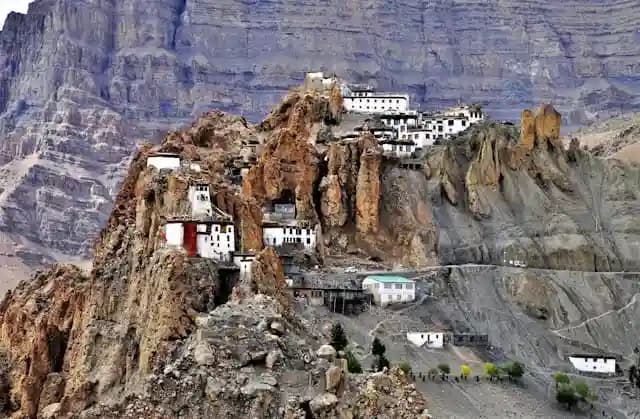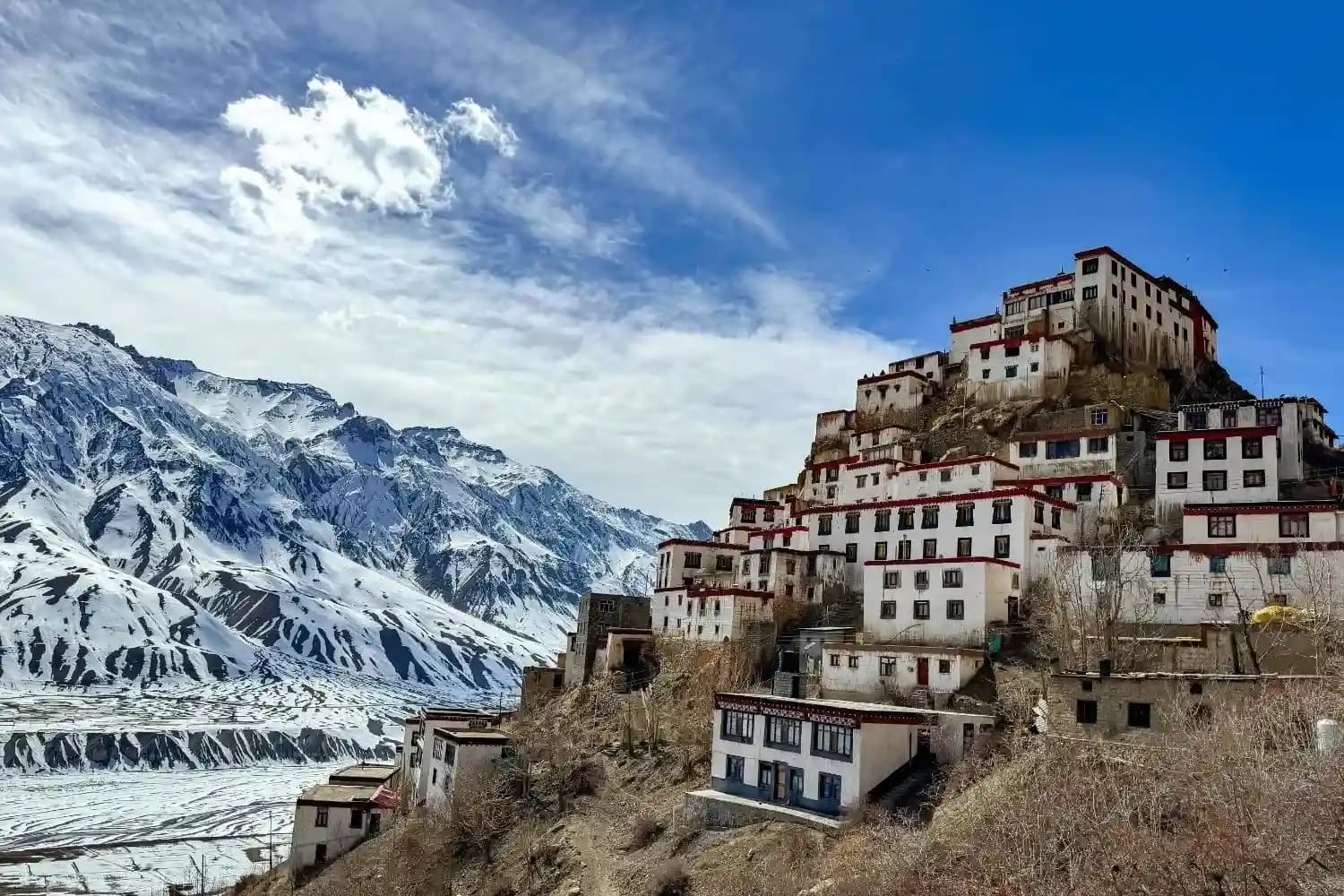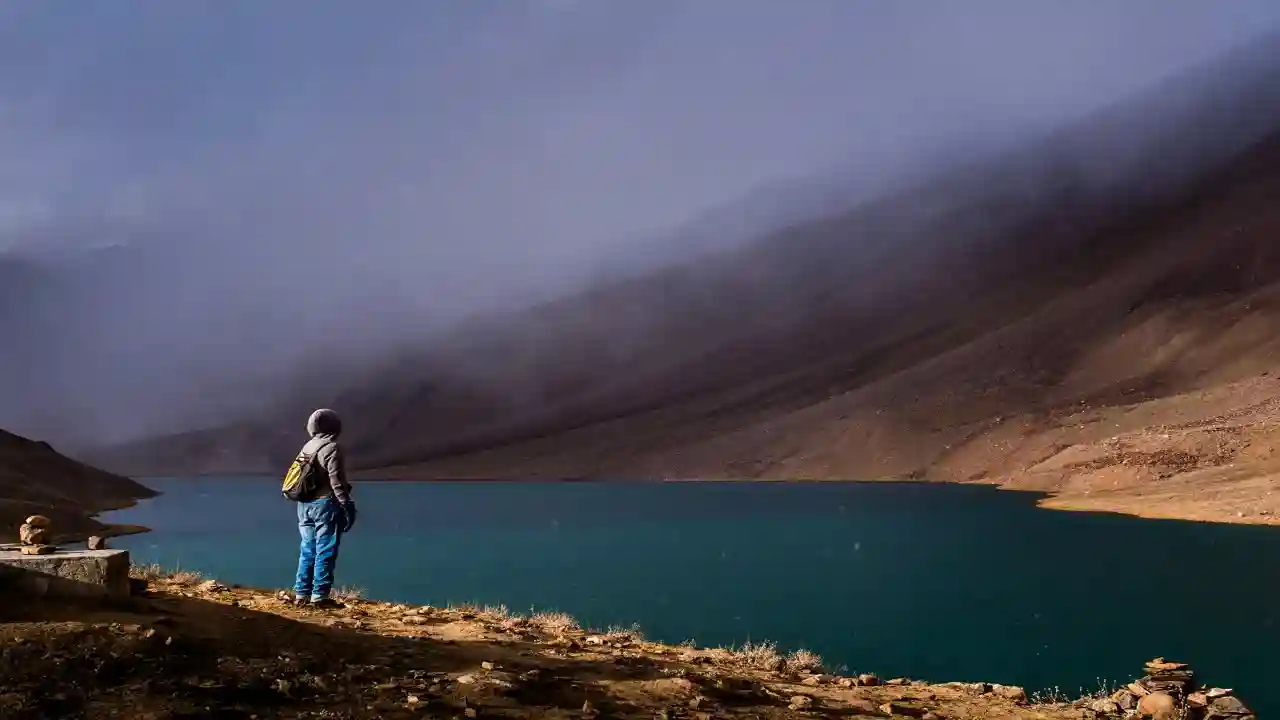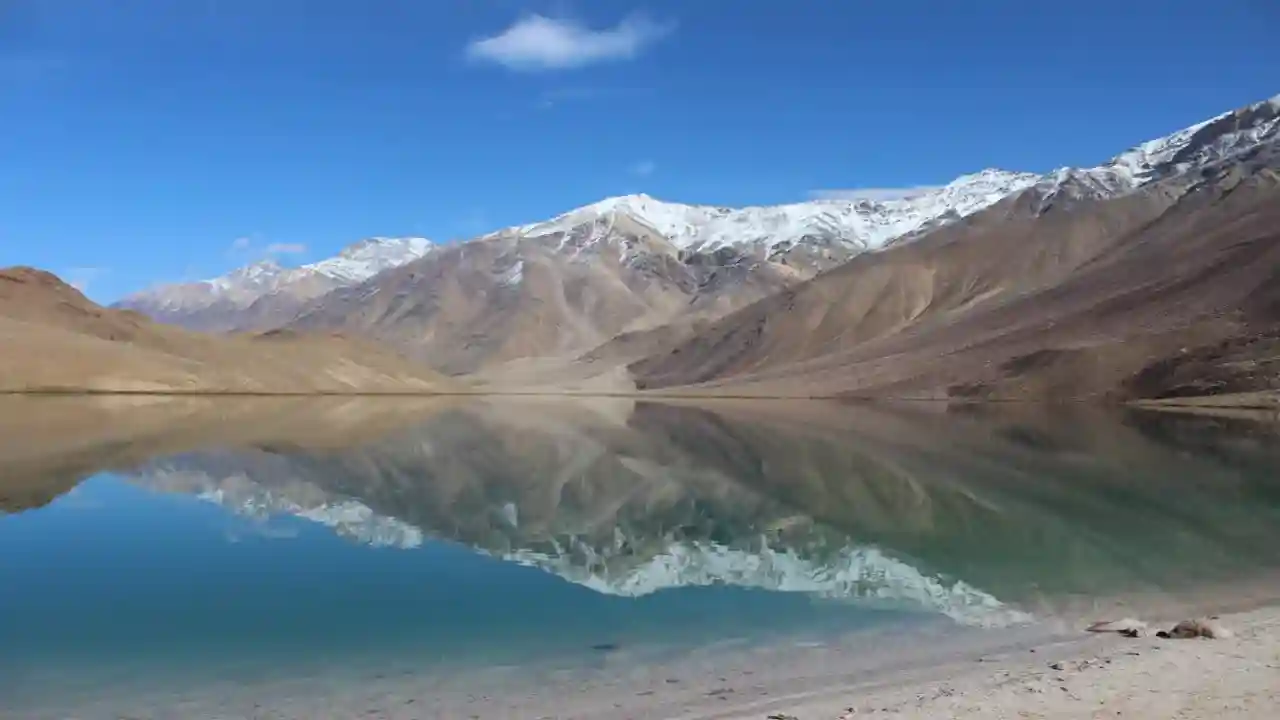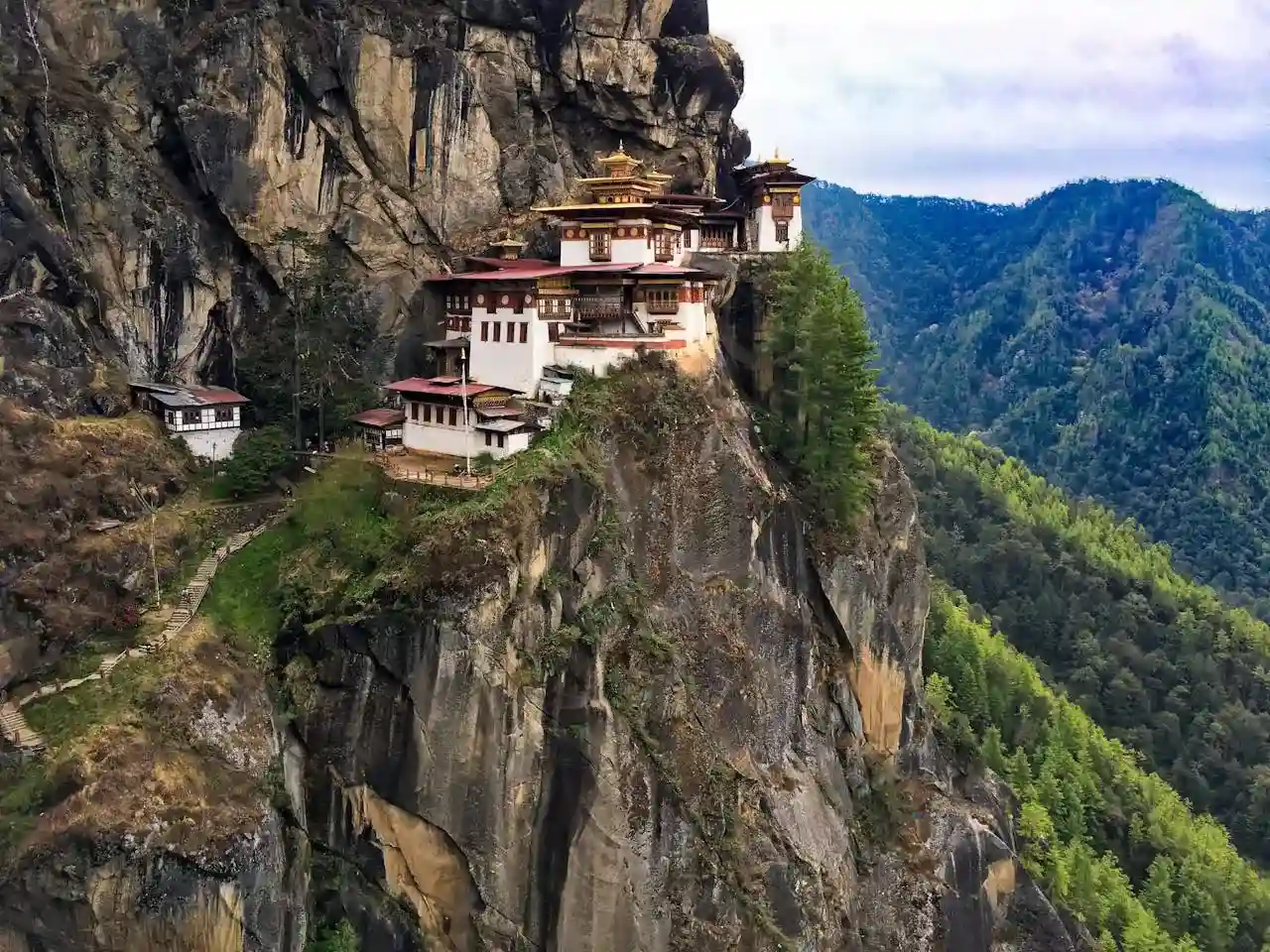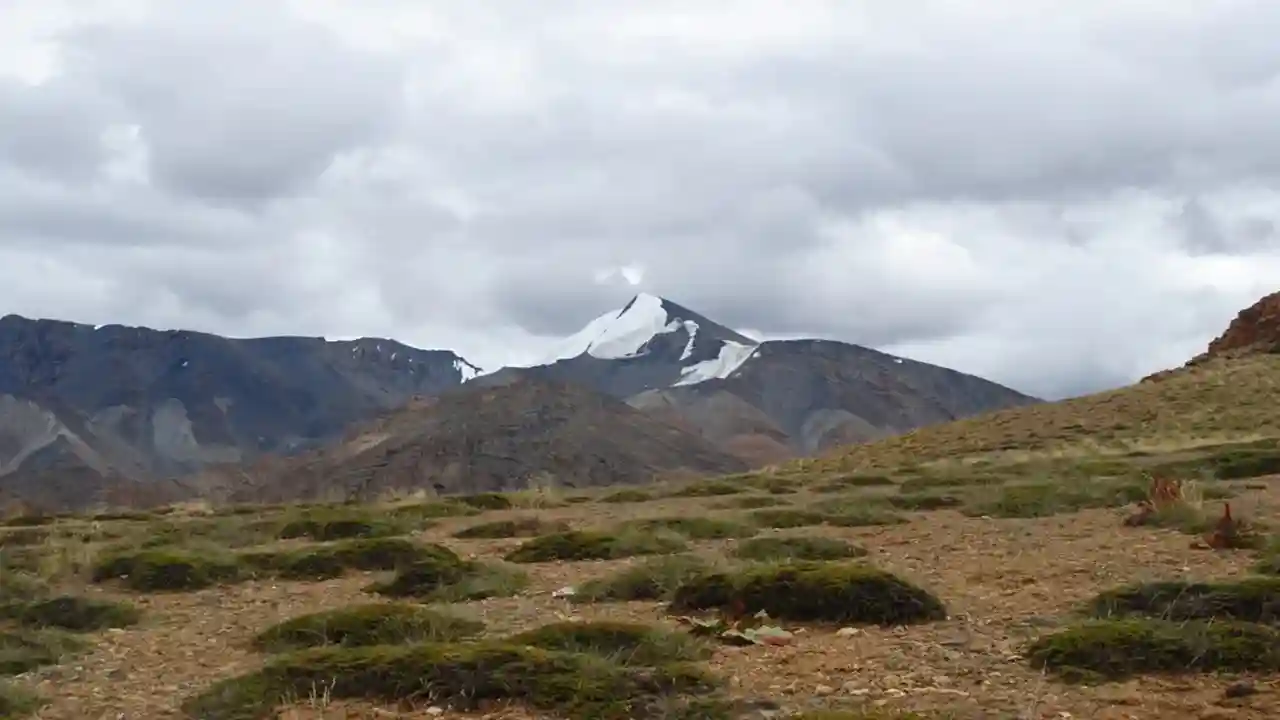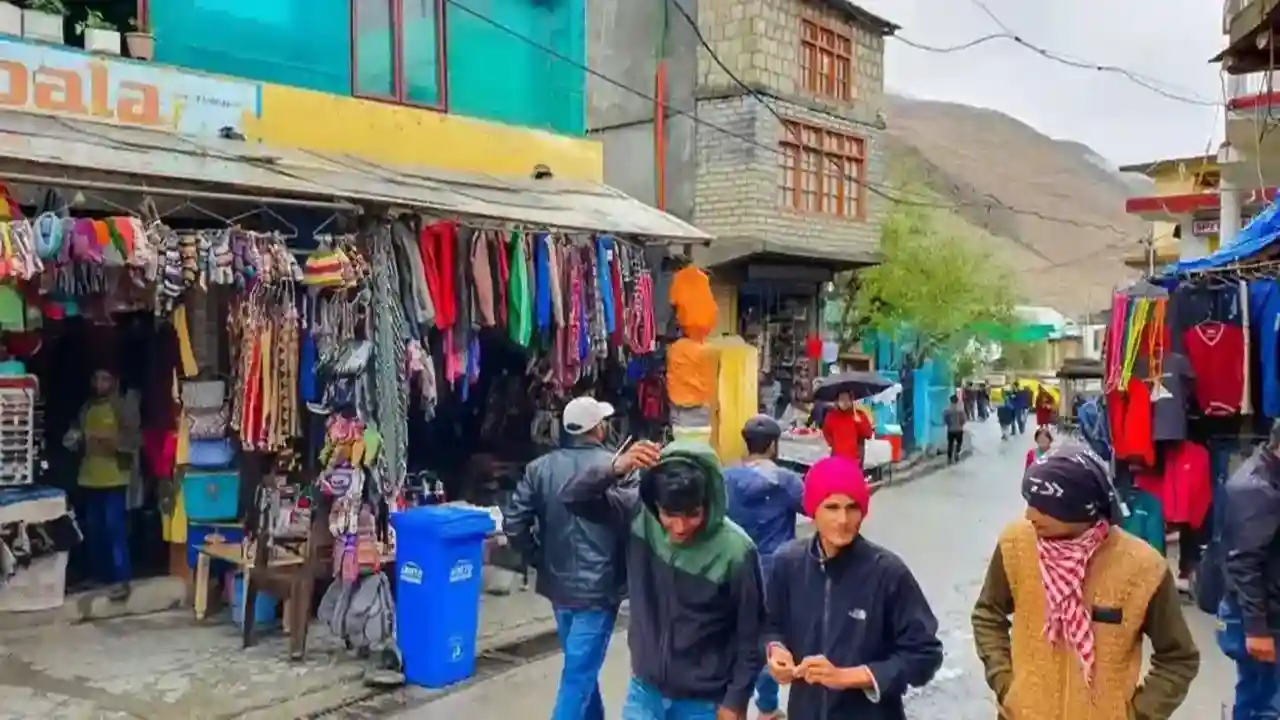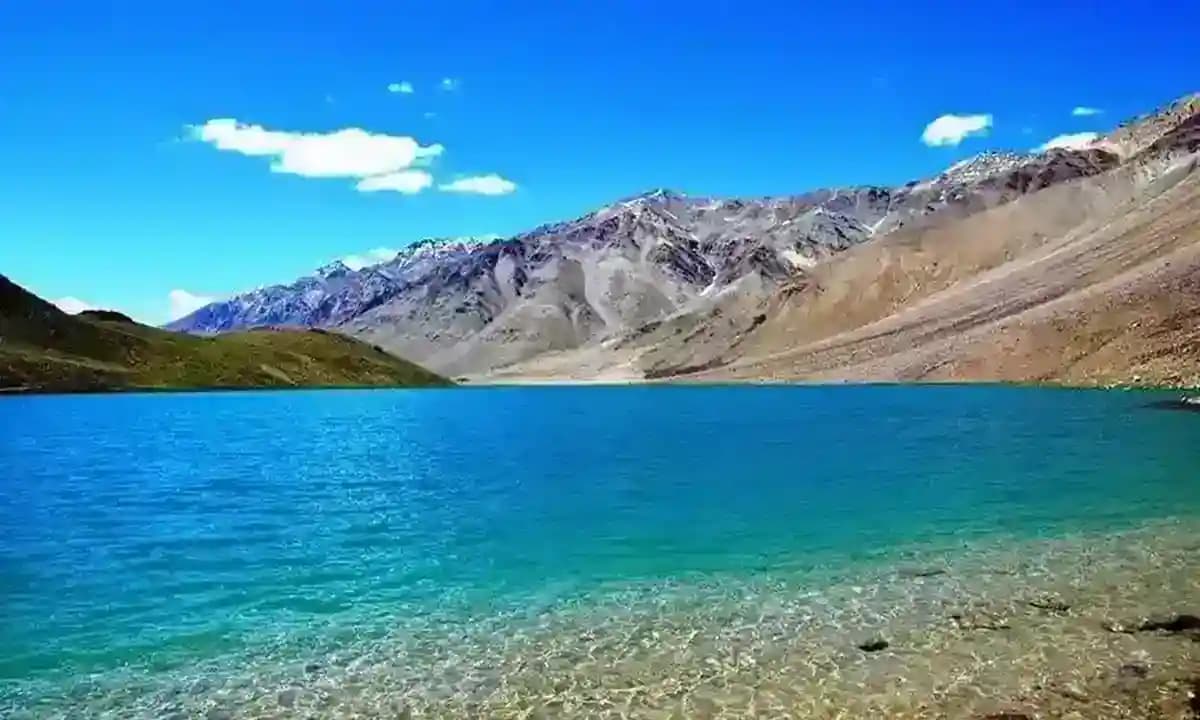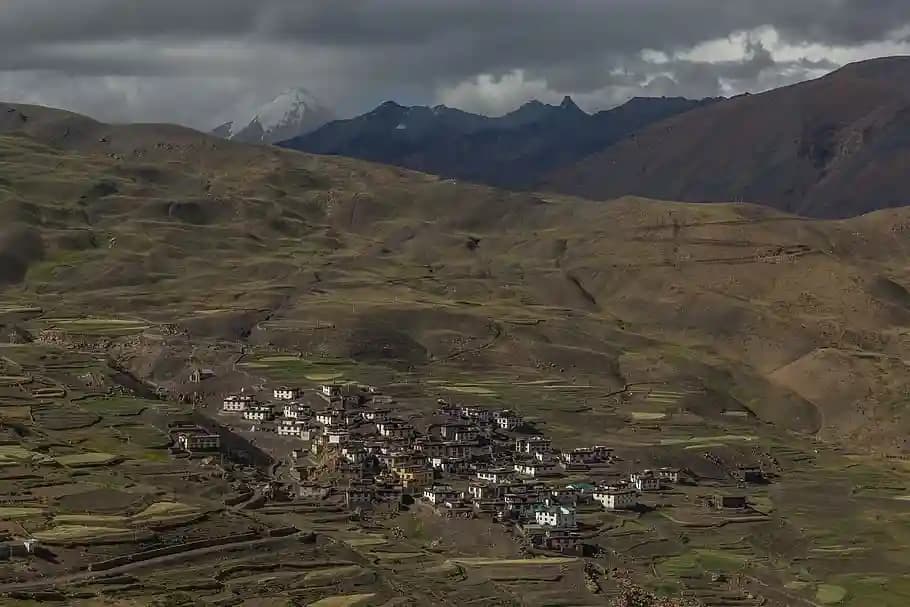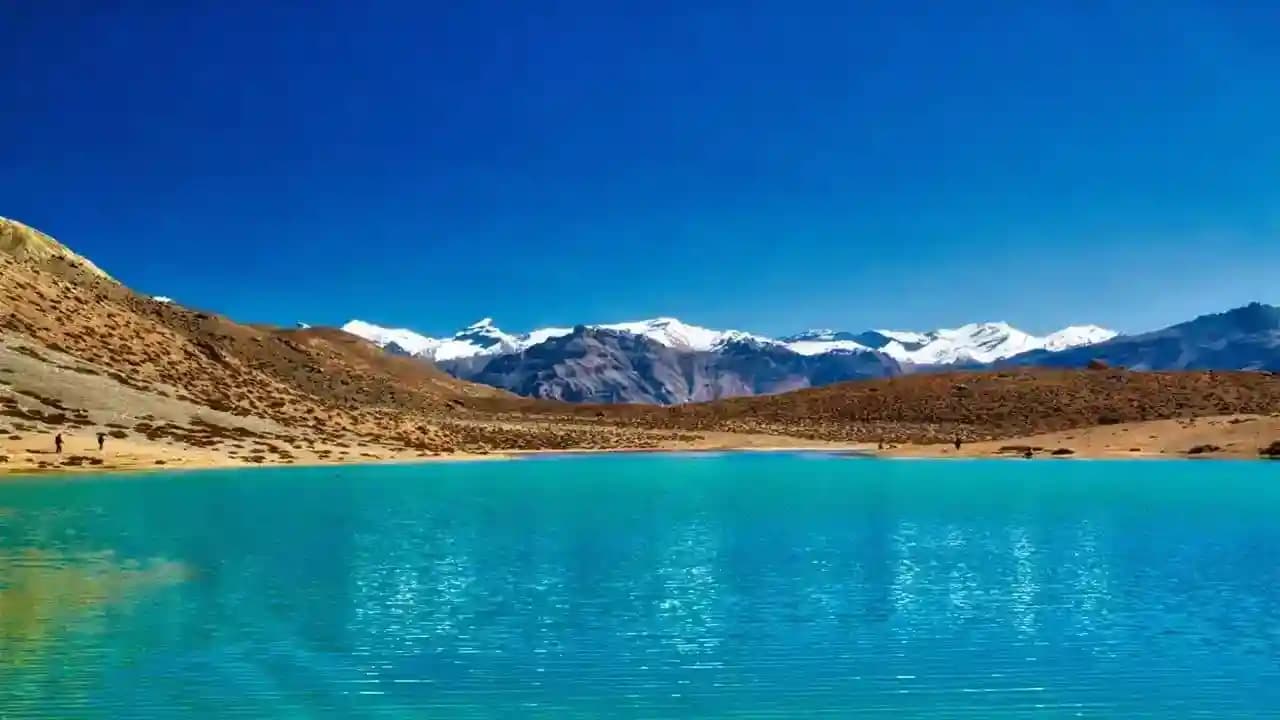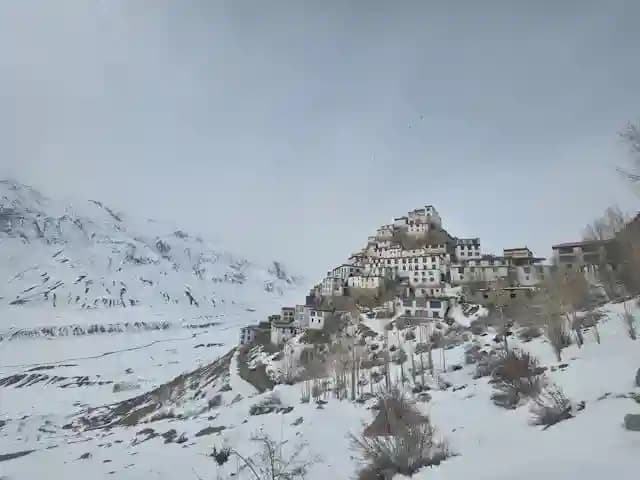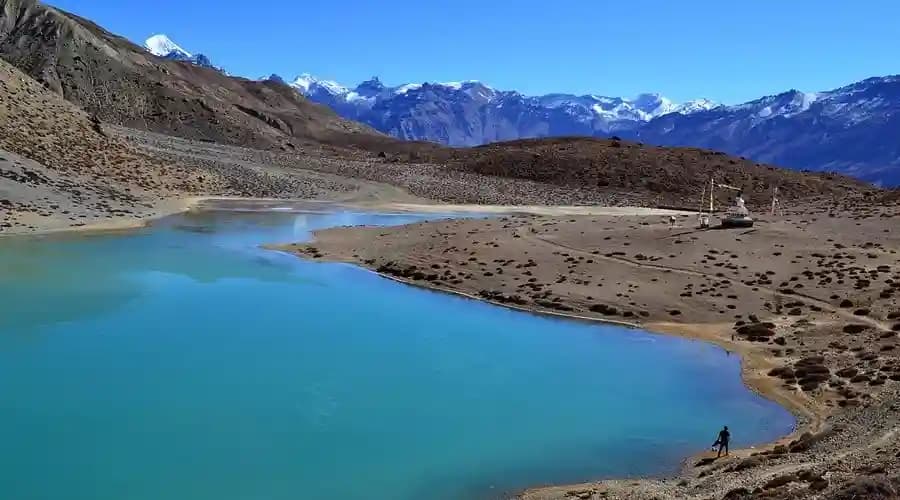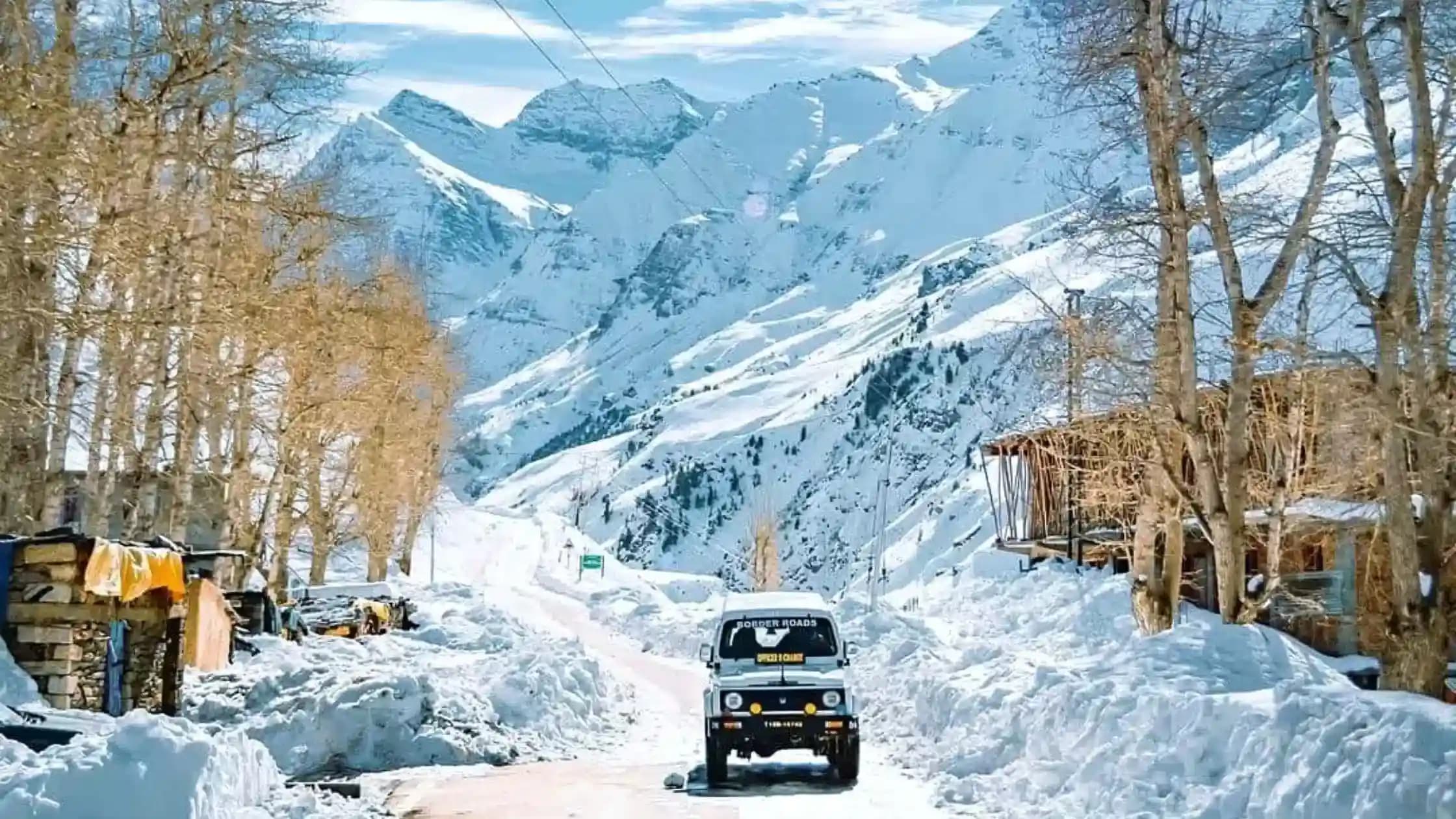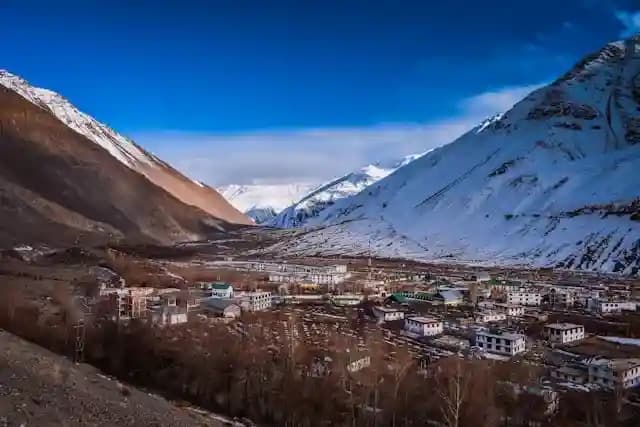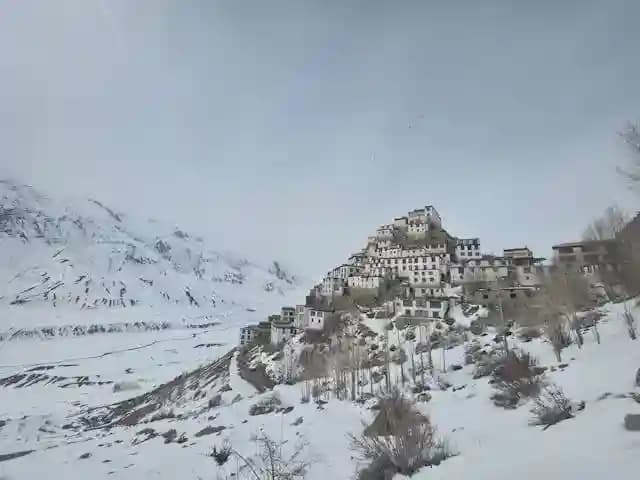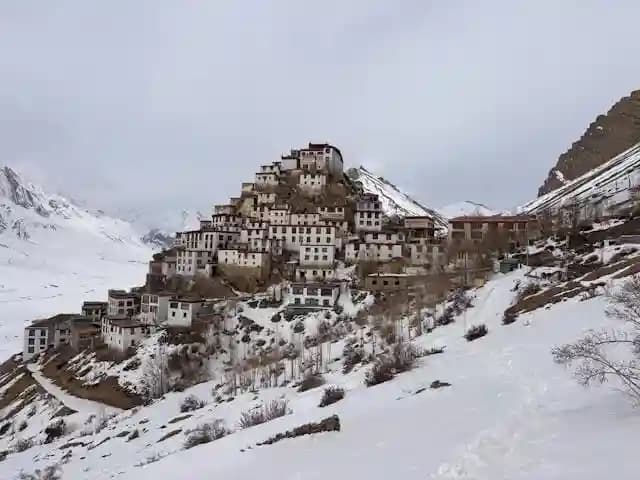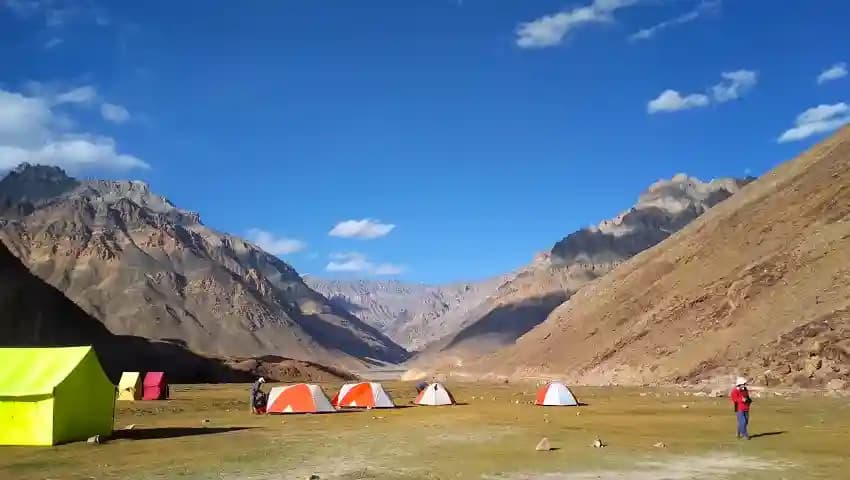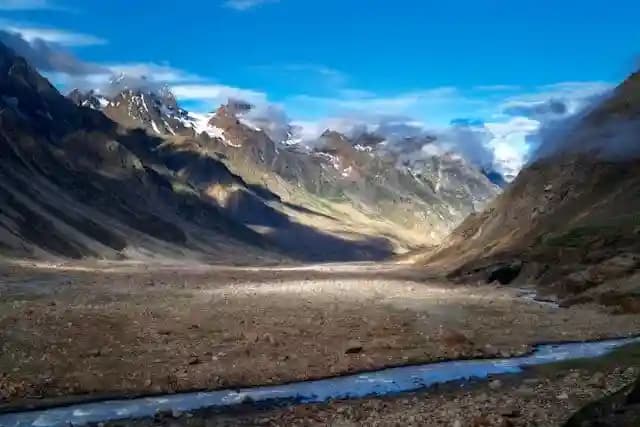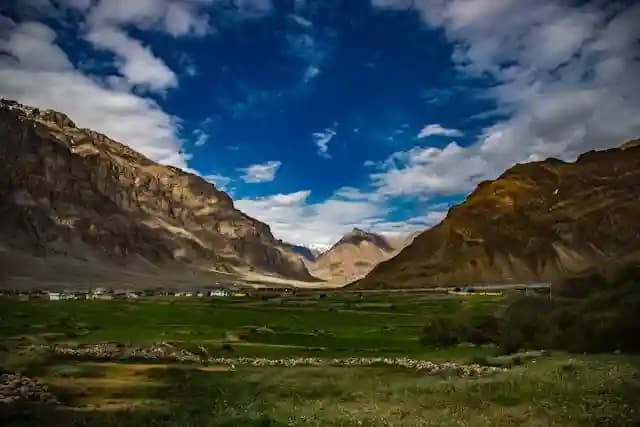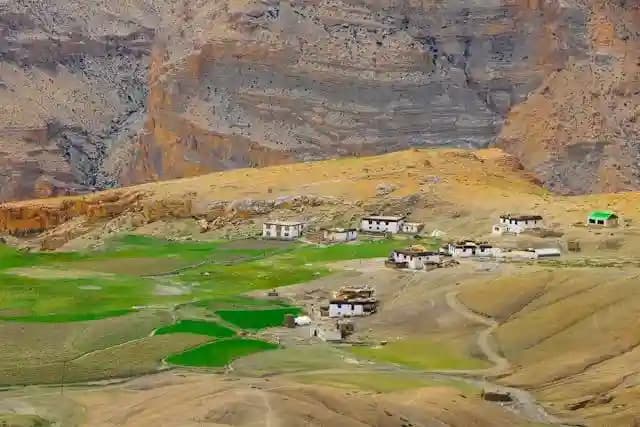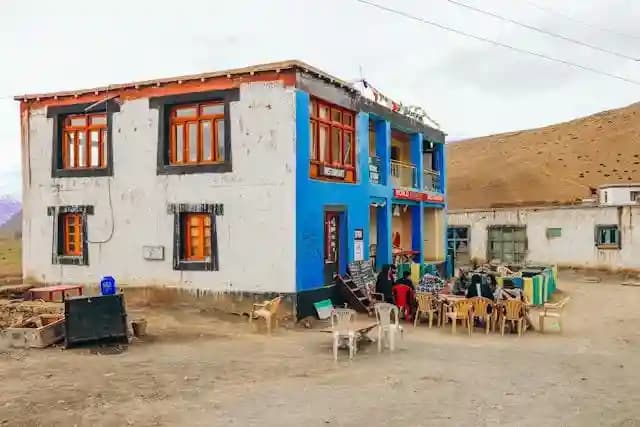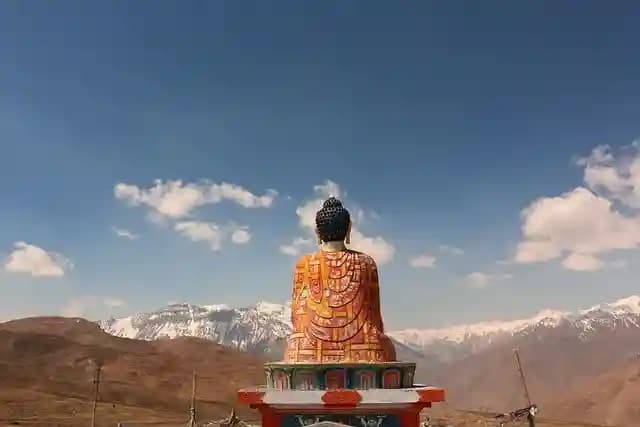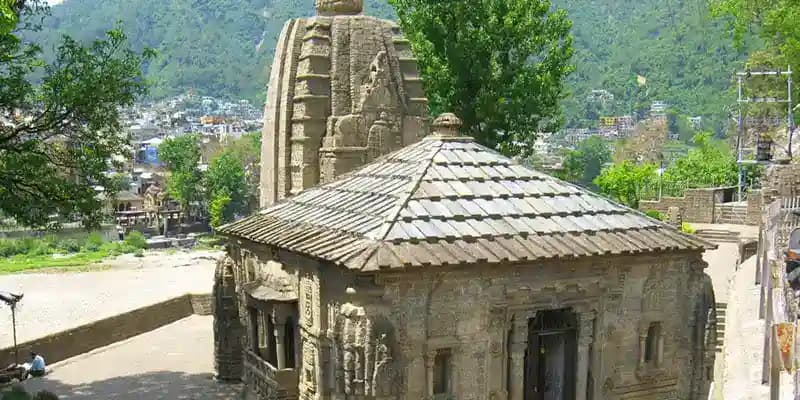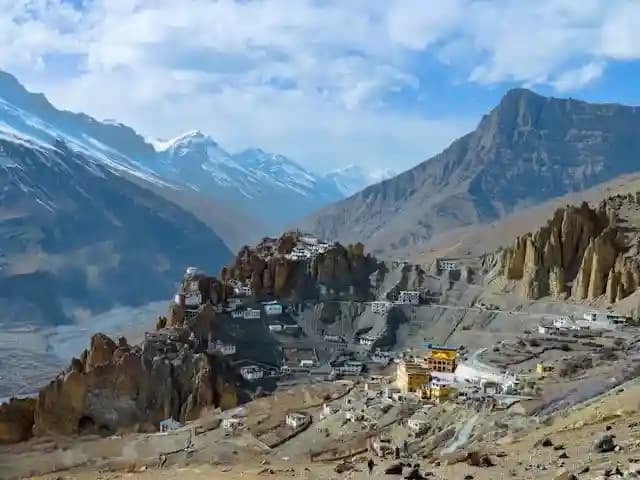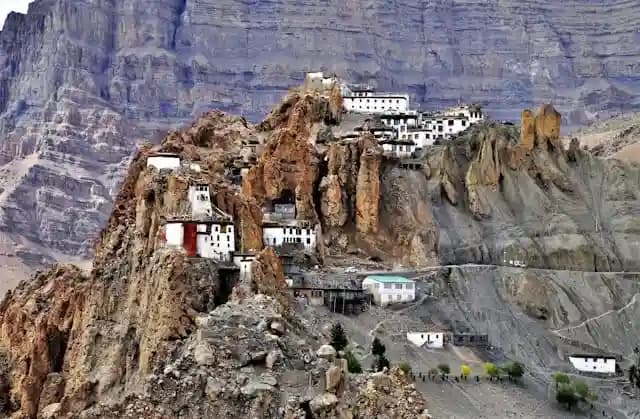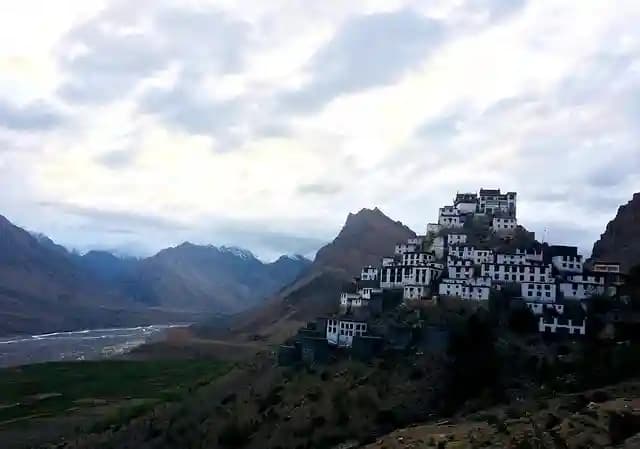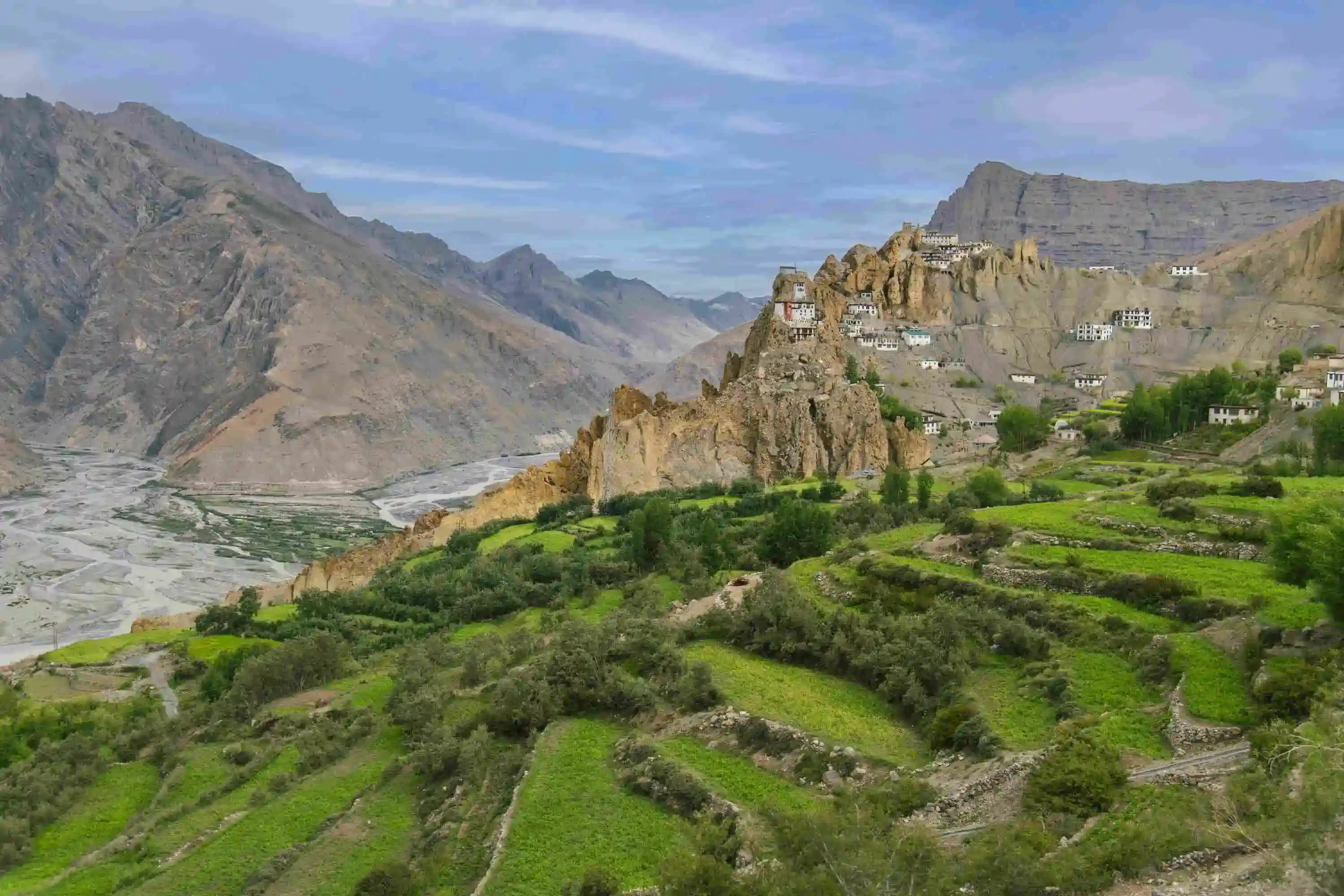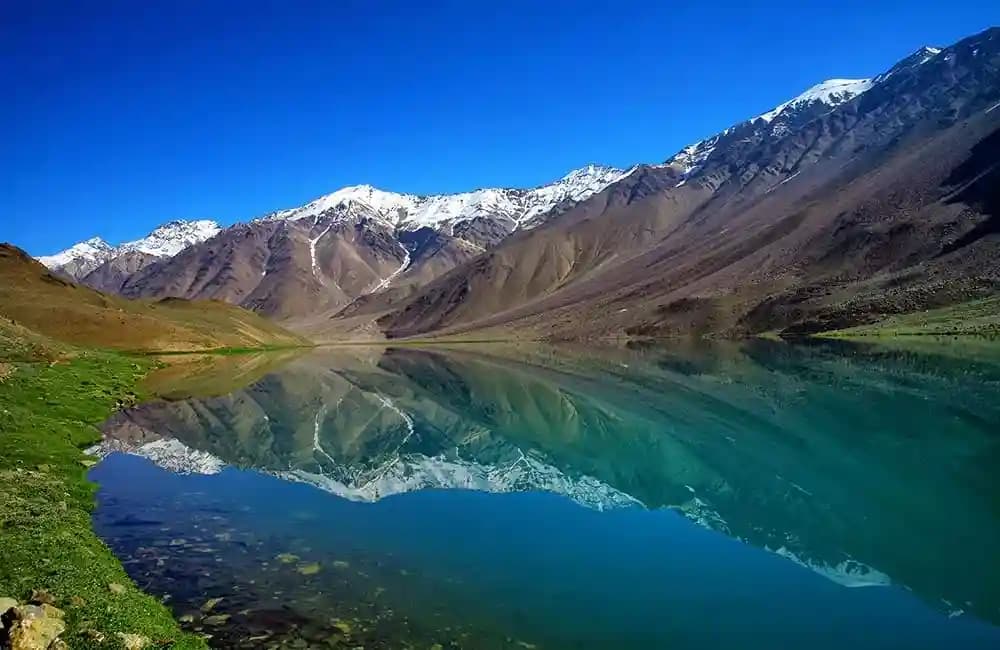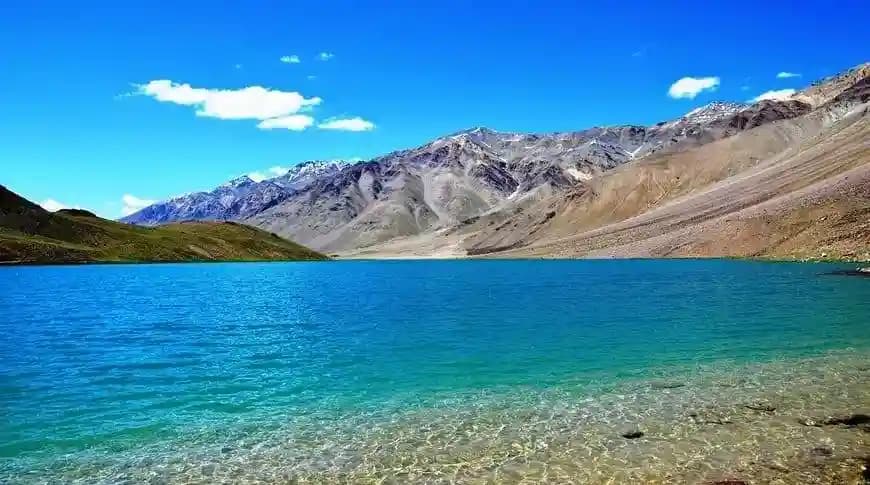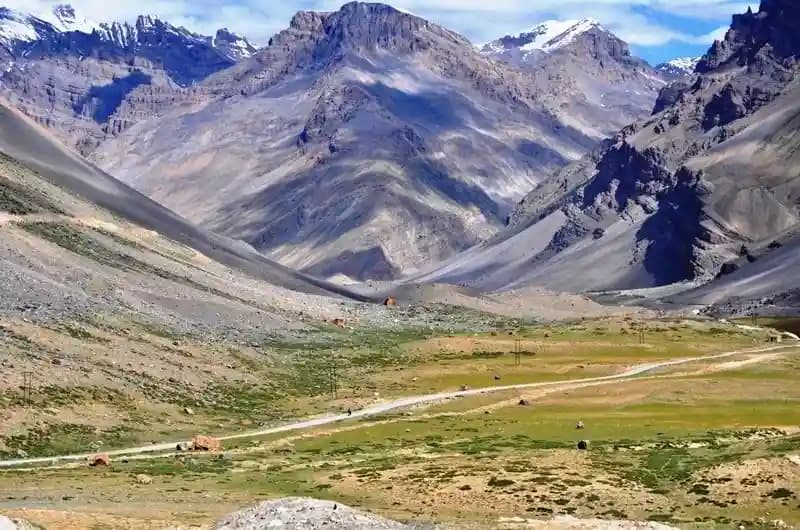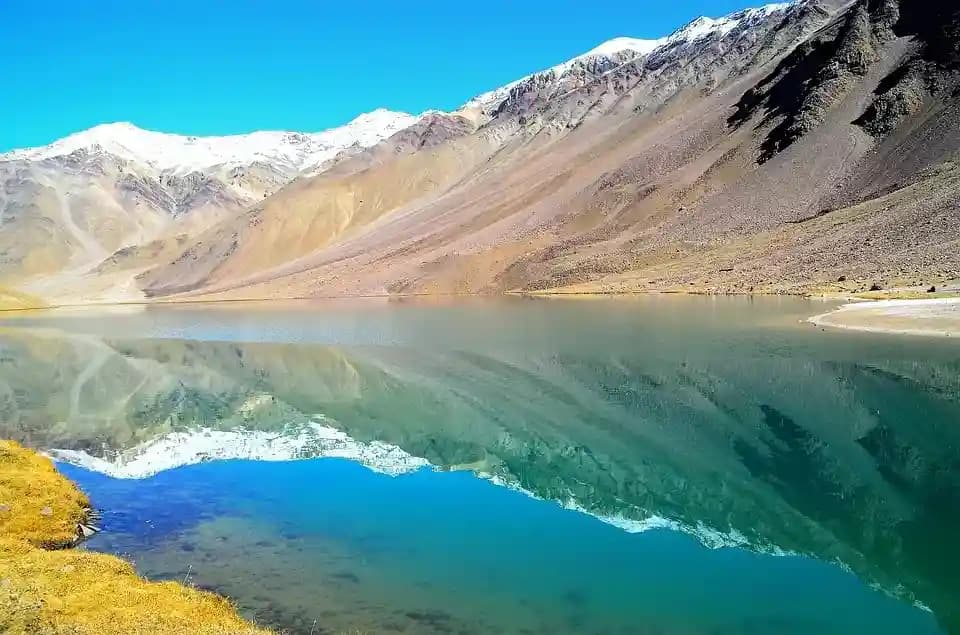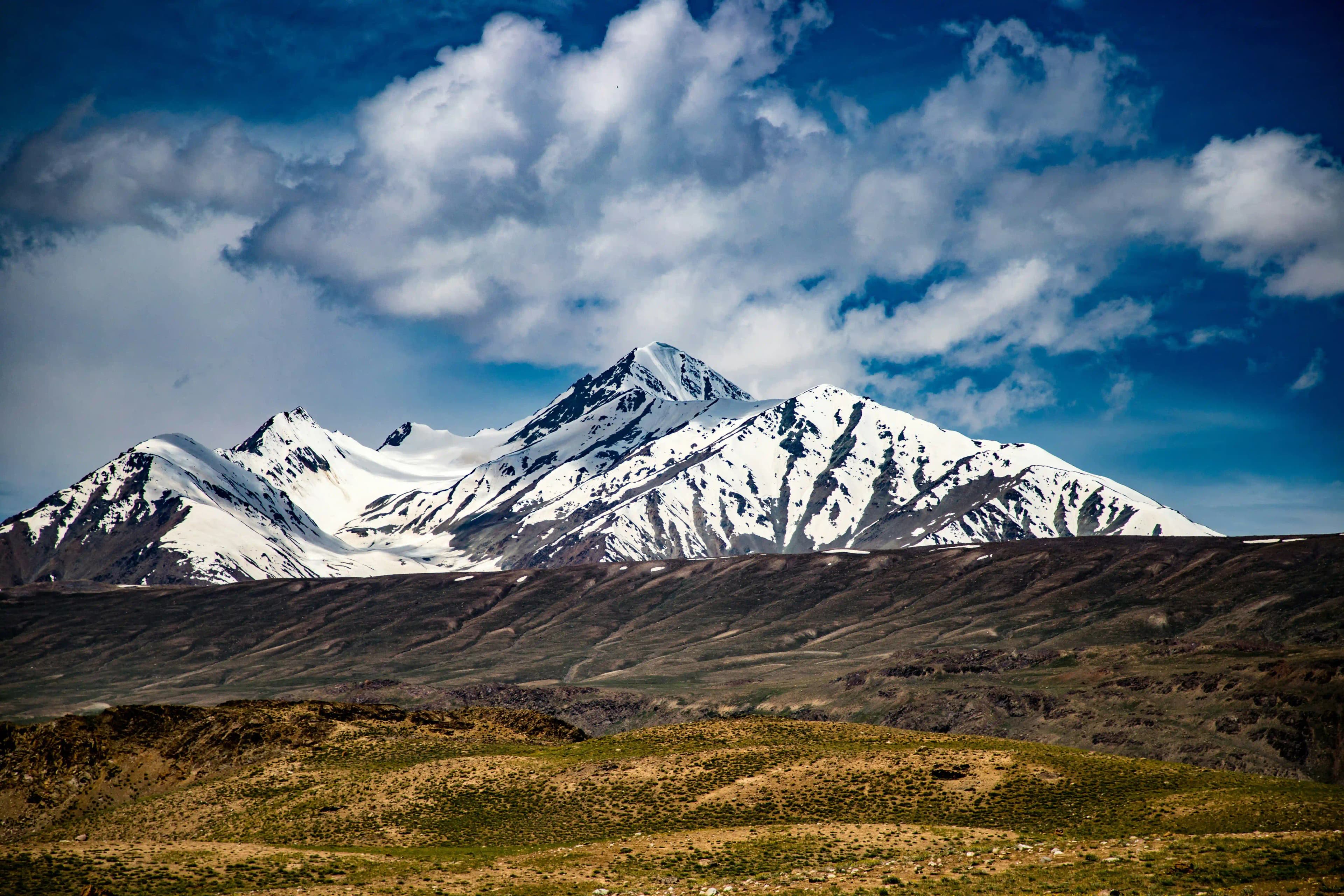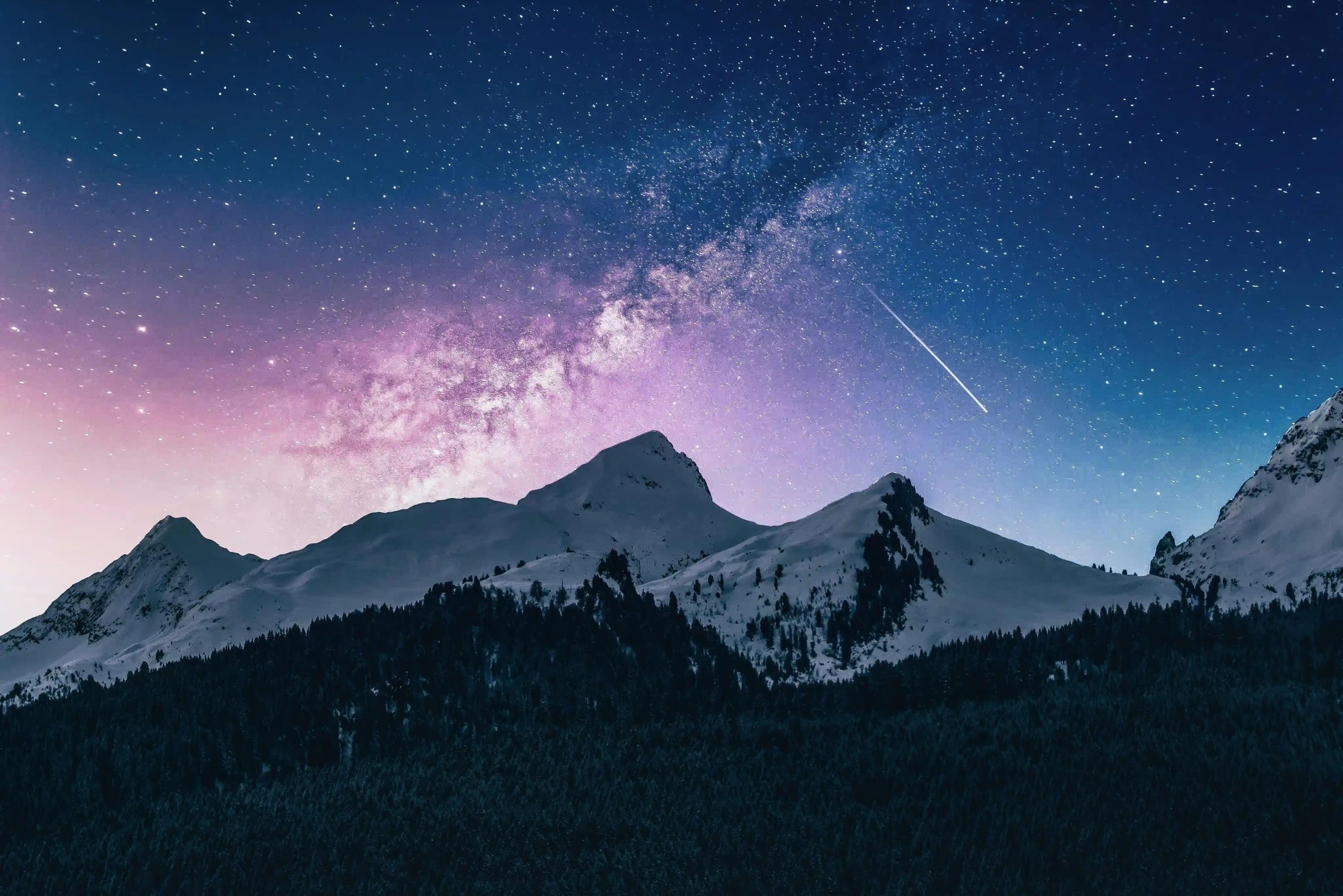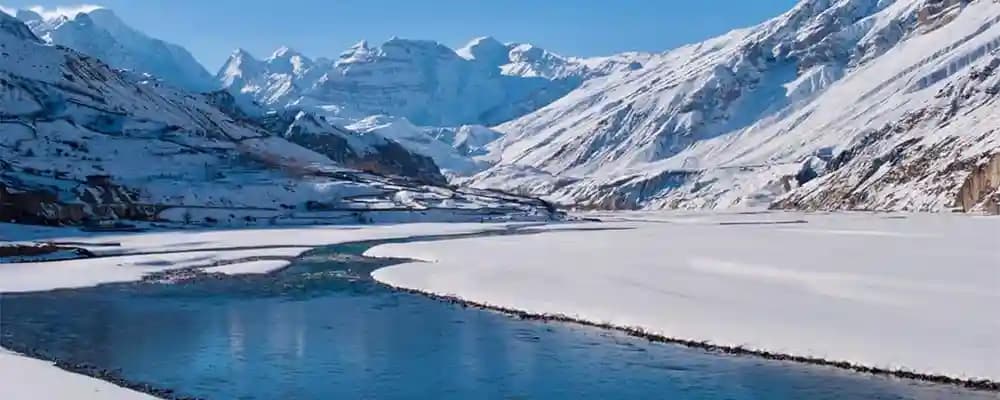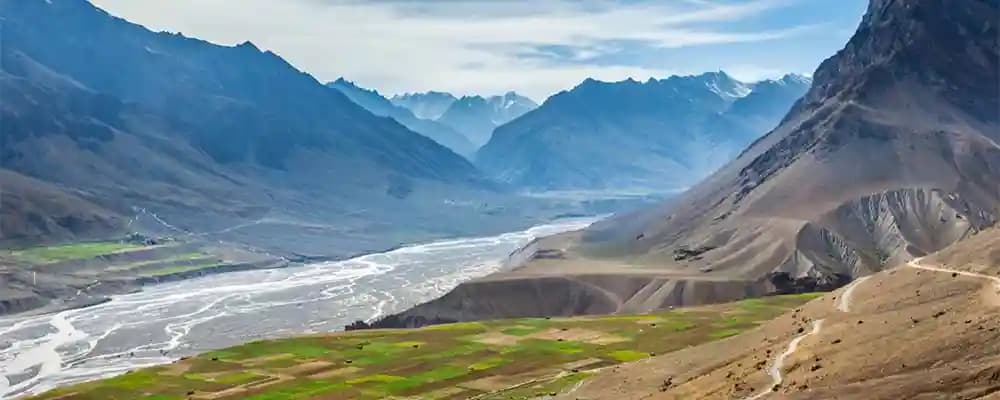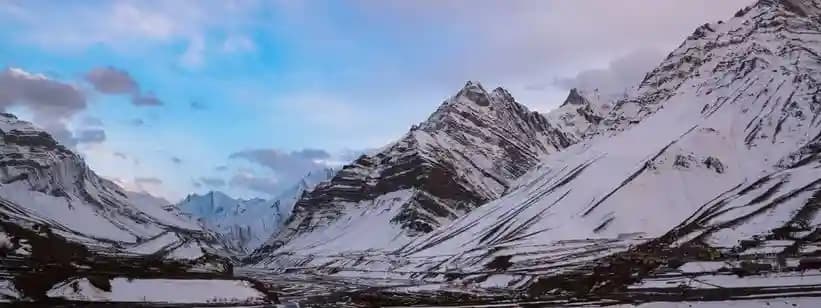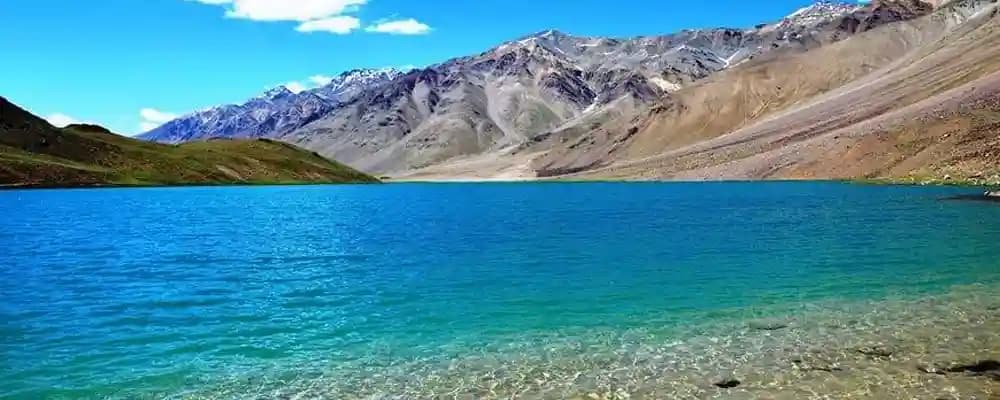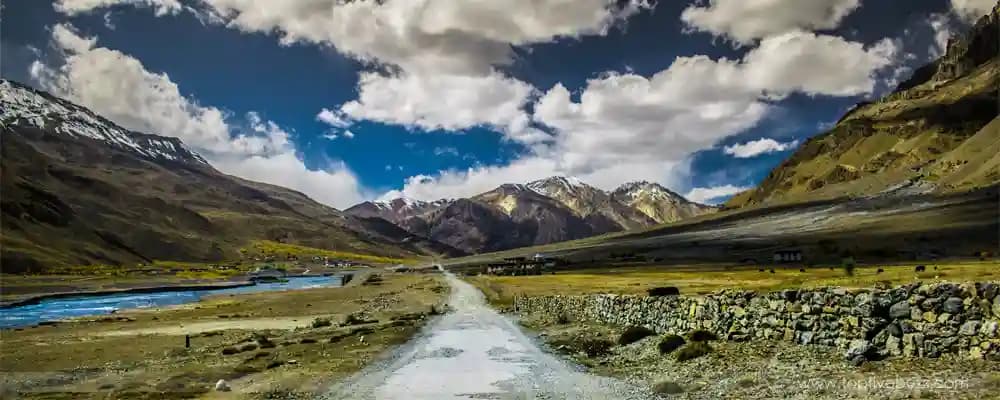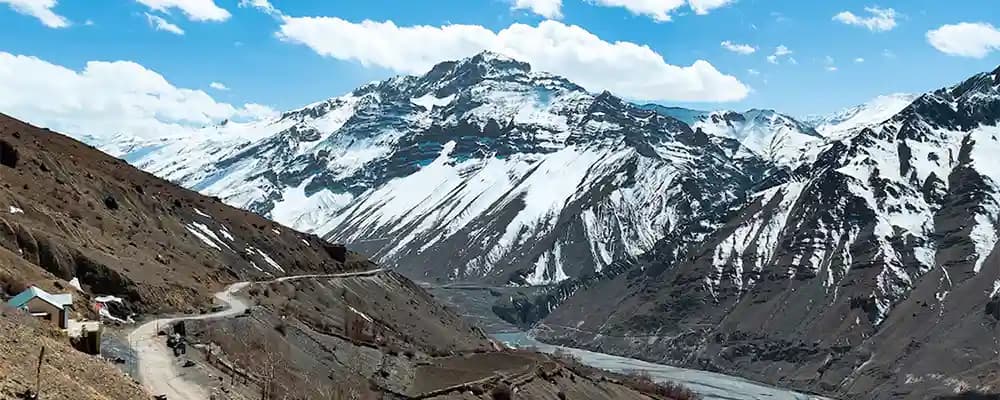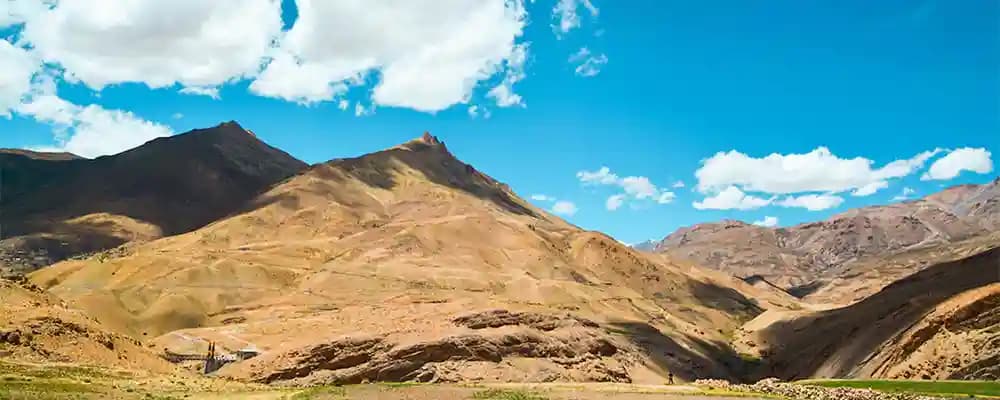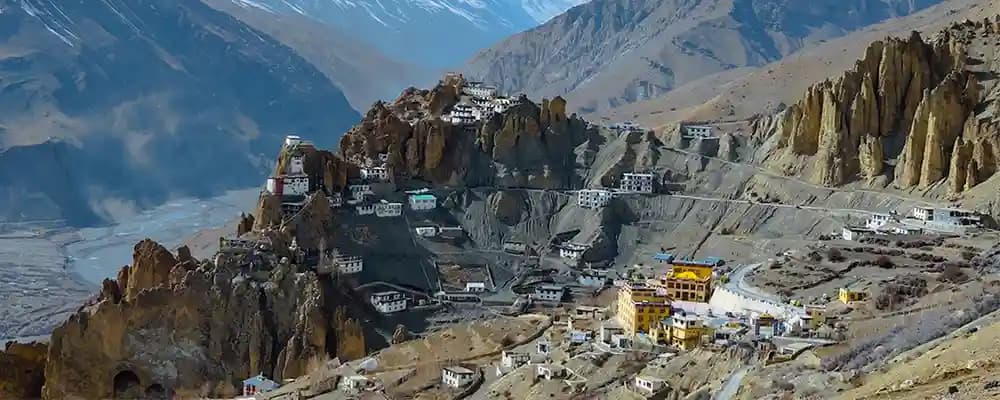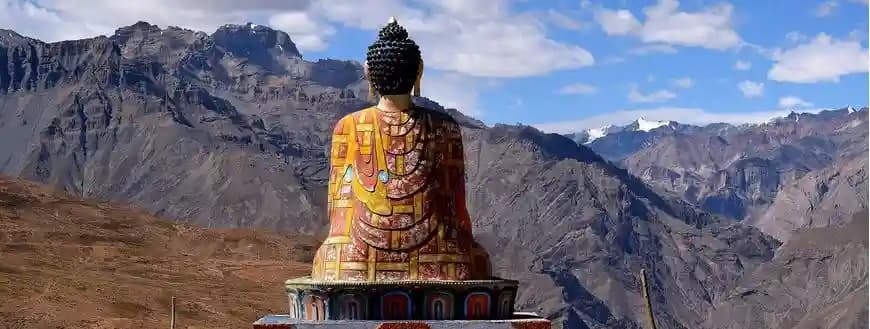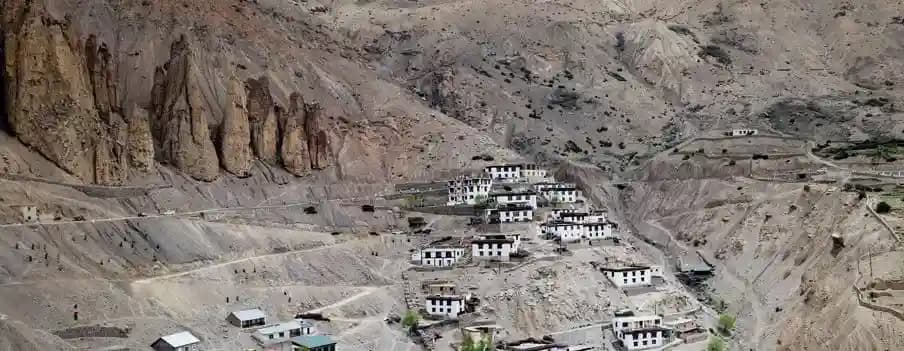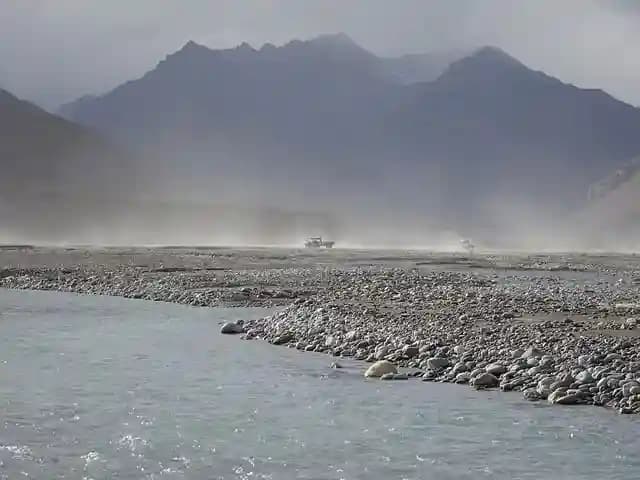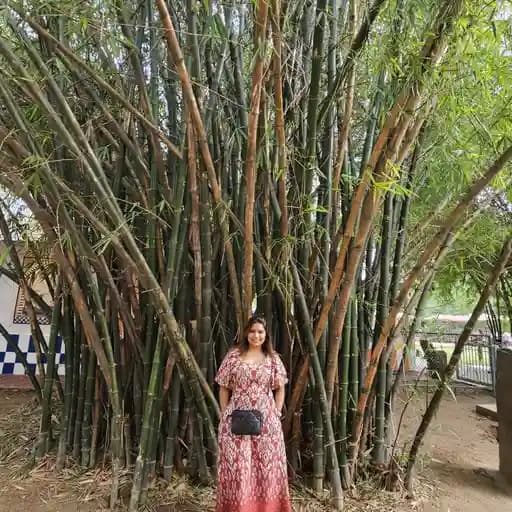Have you ever dreamed of visiting a place that feels far away from the noise of the world? Spiti Valley is that kind of place. The villages here are calm, full of warmth, and surrounded by snow peaks and open skies. Life in these Spiti Valley Villages moves slowly, and that’s what makes them so special. You’ll see old monasteries, smiling locals, and homes built out of stone and mud.
Each village has its own story. Some sit quietly by rivers, while others rest high in the mountains. Together, they show the simple and peaceful beauty of Himachal. In this blog, you’ll find 12 Spiti Valley Villages that are worth visiting once in your life. Plan your journey with Spiti Valley tour packages and discover the calm beauty of this Himalayan wonder.
12 Beautiful Villages to Visit in Spiti Valley
Here is a list of 12 beautiful Spiti Valley Villages that show the real charm of this cold desert region. Each one has its own story, culture, and peaceful surroundings that make it truly special. These villages are also among the most scenic places to visit in Spiti Valley, perfect for travellers who love nature, calm, and mountain life.
1. Lhalung Village
Lhalung is a small quiet village known for its old monastery and traditional stone houses. The lanes are narrow and roofs stay flat which helps them hold heavy snow during winter months. Farmers grow barley and keep yaks and small flocks of sheep here. Visitors will see simple homes, prayer flags, and a calm village life that feels very different from the plains. Lhalung is one of the easier-to-reach Spiti Valley Villages that shows you how mountain people actually live at such high altitudes.
Best time to visit: May to October. Clear roads, mild days, and golden fields in September and October.
2. Kibber Village
Kibber village Spiti Valley lies high on a gentle ridge at around 14,200 feet and becomes a gateway to wild open landscapes. The houses have thick walls built to stay warm against freezing cold winds. Kibber has small shops, a few guesthouses, and a local school that serve this tiny hamlet. Many travellers use this village as their base for short walks and monastery visits nearby. The area is also known for snow leopard spotting during winter, which makes it even more special for wildlife lovers. The quiet mornings here with bright sunlight falling on stone roofs make Kibber feel like a real mountain home.
Best time to visit: May to October for easy travel and village stays; January to March for guided snow-leopard expeditions.
3. Komic Village
Komic often gets called the highest village in Spiti Valley and looks tiny against massive wide skies. Sitting at around 15,000 feet, it holds a special place for travellers who enjoy extreme high–altitude views. This settlement has simple stone homes and small fields where barley grows during summer. A little monastery and prayer flags mark where the village centre lies. Roads reach close by but the last walk to houses gives you a real sense of height and complete silence. Local people survive cold harsh winters with thick woollen clothes and small stoves. Komic village becomes special because of its incredible high views and extremely clear mountain air.
Best time to visit: June to September. Roads are open and the high-altitude weather is kinder.
4. Tashigang Village
Tashigang is a small cluster of houses with a gentle river flowing close by. The fields look like patchwork plots of barley and buckwheat during warmer months. People here keep goats and speak their own unique mountain dialect. The village has a tiny shrine and open spaces where women dry local grain under the sun. Simple guest rooms are available for visitors who want to stay and watch valley life slow down completely. Tashigang is one of those Spiti Valley Villages that feels very calm and quietly lived-in.
Best time to visit: May to October. Green fields in summer and very clear skies for stargazing.
5. Demul Village
Demul lies on a slope with beautifully terraced fields creating natural steps down the hillside. The village has a handful of houses, small barns, and narrow paths winding between stone walls. Local families here still practice organic farming methods passed down through generations without using any modern chemicals. The stone houses stay low and thick which keeps heat trapped inside through freezing cold nights. Visitors who walk here see very simple authentic farming life and wide open views of surrounding ridges. Demul stands among those villages in Spiti Valley that give you a clear picture of traditional mountain living unchanged by time.
Best time to visit: May to September. Terraced fields are active and trails are dry.
6. Chicham Village
Chicham hangs above a very deep gorge and connects to the other side through chicham bridge at 13,596 feet. The village paths drop steeply and houses stand right at the cliff edge giving you heart-stopping views. Locals grow potatoes and peas while keeping goats for milk and meat. The constant sound of wind howling through the valley and bright sun hitting stone walls fill every day here. Chicham is one of the villages in Spiti Valley that shows dramatic geography and quiet village routines in a very direct way.
Best time to visit: May to October to walk the high bridge and nearby trails; January to March for wildlife tracking in snow.
7. Langza Village
Langza village Spiti Valley is known for its giant Buddha statue that watches over green fields and white houses below. This village sits at around 14,500 feet, where the air feels incredibly fresh and light. Locals often find ancient fossils in the nearby hills, which makes this place special. The homes get built from mud and stone which keeps them warm during cold months. Langza is one of the Spiti Valley villages to visit if you want mountain peace and cultural charm together.
Best time to visit: May to October. Easy access, fossil walks on dry slopes, and big mountain views.
8. Hikkim Village
Hikkim became famous for having the world's highest post office at around 14,400 feet and many visitors send postcards from here. The small houses stand close together with prayer flags fluttering above them constantly. People here live a very simple life growing their own food and keeping animals for survival. The road to Hikkim winds through mountains but gives you amazing views at every turn. Among all Spiti Valley Villages, Hikkim village gives you a real honest look into life high in the mountains where quiet and beauty fill every single corner.
Best time to visit: Late May to October, when the post office is usually open and roads are drivable.
9. Gette Village
Gette is a peaceful spot with only a few homes and a wide view of the valley stretching below. Sitting at around 14,000 feet, it gives you one of the most dramatic drop-down views in the region. People here live off farming and herding animals while following very old traditions. The clear sky and open land make it a brilliant place for taking photographs. The village lies close to Key Monastery which many visitors stop to see on their way. Life here feels incredibly still with wind and silence being part of every single day. Gette is one of the calmest Spiti Valley villages you can visit.
Best time to visit: May to October. Crystal-clear valley views and easy add-on visit to Key Monastery.
10. Losar Village
Losar village often gets called the last village of Spiti Valley before the road leads up to Kunzum Pass. It sits at roughly 13,400 feet near a river surrounded by tall snow-covered peaks on all sides. Small chai stalls and homestays offer warmth and simple food to tired travellers passing through. People here are friendly and always ready to share stories about mountain life. The village marks a good stop for rest before longer mountain drives ahead. Losar shows you how remote but welcoming the farthest Spiti Valley villages can really be.
Best time to visit: June to September. Kunzum Pass is generally open and the village services are active.
11. Nako Village
Nako village Spiti Valley lies near a still lake that reflects the nearby hills perfectly, especially in clear summer mornings. The houses are packed tightly together, made from local mud and stone to stay warm in winter. You can walk around the beautiful Nako Lake, visit the old monastery, or simply enjoy quiet time near the water. The village stays peaceful with no rush or noise anywhere. During summer the reflection of prayer flags on the lake looks absolutely beautiful. Nako shows a softer, gentler side of the mountains with its lovely mix of nature and village life.
Best time to visit: April to June and September to October. Calm weather and mirror-like lake reflections.
12. Tabo Village
Tabo village Spiti Valley is home to the ancient Tabo Monastery which is one of the oldest in the entire Himalayas. This monastery was found over a thousand years ago. Inside you'll find ancient wall paintings and sculptures that draw both travellers and monks from different parts of the world. The village keeps its simple character with local houses and small farming fields scattered everywhere. You can talk to monks, visit the meditation caves on the nearby hill, or walk through narrow lanes peacefully. Tabo is one of the most historic villages in Spiti Valley, filled with calm and deep cultural charm.
Best time to visit: March to June and September to October. Comfortable temperatures for exploring the monastery and caves.
Conclusion
The beauty of Spiti lies not only in its high mountains but also in its peaceful villages. Each of these Spiti Valley villages tells a story of tradition, kindness, and simple living. From old monasteries and quiet fields to stone houses and warm-hearted locals, everything here feels calm and untouched. Travelling through these remote villages shows you a way of life that still follows nature’s rhythm. The slow pace, fresh air, and open landscapes make you feel grounded and present in every moment. Plan your visit soon and explore these beautiful villages to experience the real heart of Spiti and carry back memories that stay with you for a long time.
